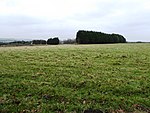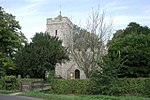Port Lympne Mansion
Country houses in KentGrade II* listed buildings in KentGrade II* listed housesHerbert Baker buildings and structuresPhilip Tilden buildings ... and 1 more
Use British English from August 2015

Port Lympne, at Lympne, Kent is an early 20th-century country house built for Sir Philip Sassoon, 3rd Baronet by Herbert Baker and Philip Tilden. Completed after the First World War. Following Sassoon's death in 1939 it was bequeathed with its contents, including cars and planes, to Hannah Gubbay, his cousin. It was abandoned after the Second World War. In 1973, it was purchased by John Aspinall as part of an expansion of his Port Lympne Zoo. The house is a Grade II* listed building as of 29 December 1966.
Excerpt from the Wikipedia article Port Lympne Mansion (License: CC BY-SA 3.0, Authors, Images).Port Lympne Mansion
Knoll Hill, Folkestone and Hythe District
Geographical coordinates (GPS) Address External links Nearby Places Show on map
Geographical coordinates (GPS)
| Latitude | Longitude |
|---|---|
| N 51.07565 ° | E 0.99958 ° |
Address
Port Lympne Mansion
Knoll Hill
CT21 4PF Folkestone and Hythe District
England, United Kingdom
Open on Google Maps







